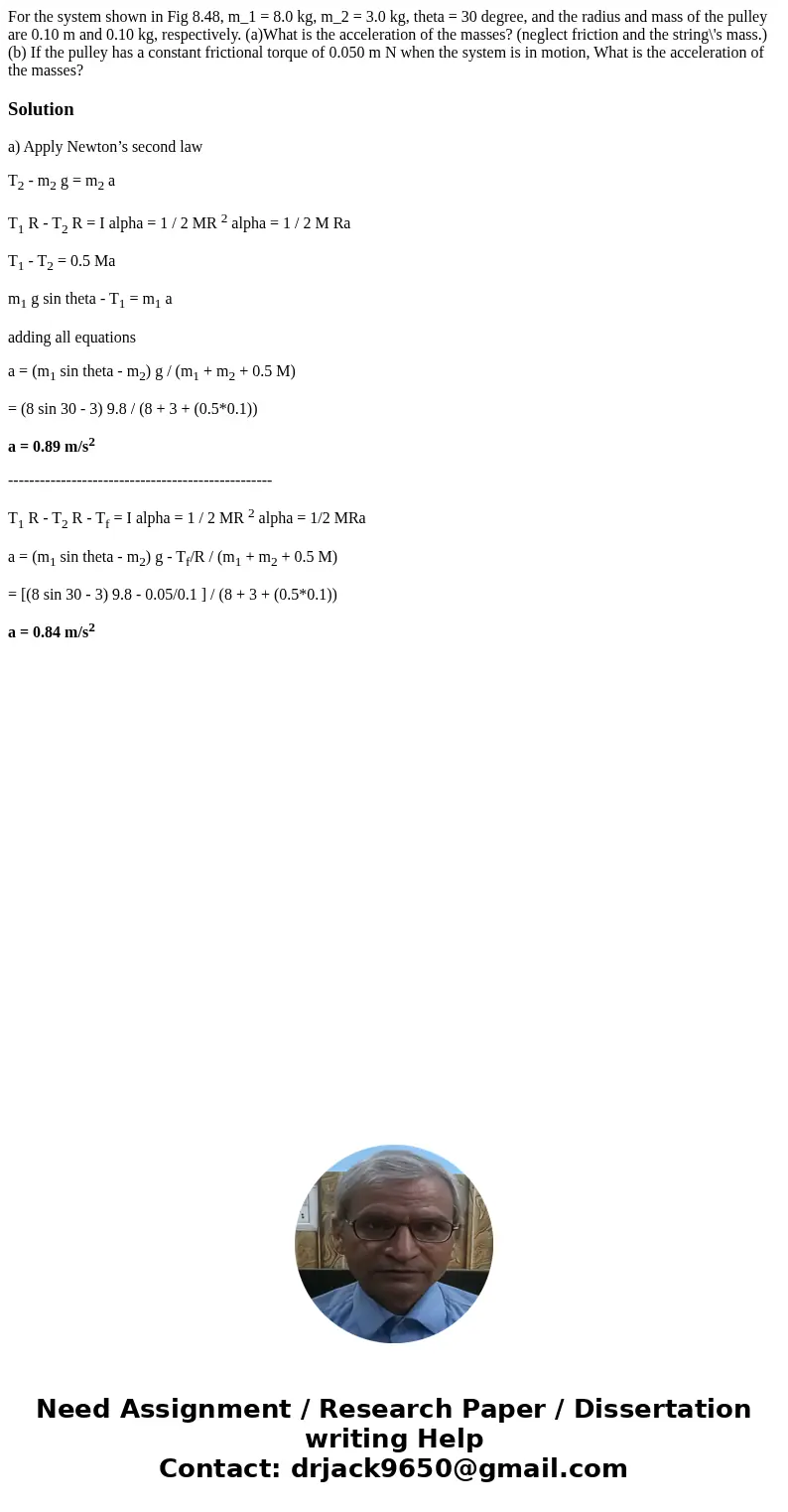For the system shown in Fig 848 m1 80 kg m2 30 kg theta 3
For the system shown in Fig 8.48, m_1 = 8.0 kg, m_2 = 3.0 kg, theta = 30 degree, and the radius and mass of the pulley are 0.10 m and 0.10 kg, respectively. (a)What is the acceleration of the masses? (neglect friction and the string\'s mass.) (b) If the pulley has a constant frictional torque of 0.050 m N when the system is in motion, What is the acceleration of the masses? 
Solution
a) Apply Newton’s second law
T2 - m2 g = m2 a
T1 R - T2 R = I alpha = 1 / 2 MR 2 alpha = 1 / 2 M Ra
T1 - T2 = 0.5 Ma
m1 g sin theta - T1 = m1 a
adding all equations
a = (m1 sin theta - m2) g / (m1 + m2 + 0.5 M)
= (8 sin 30 - 3) 9.8 / (8 + 3 + (0.5*0.1))
a = 0.89 m/s2
--------------------------------------------------
T1 R - T2 R - Tf = I alpha = 1 / 2 MR 2 alpha = 1/2 MRa
a = (m1 sin theta - m2) g - Tf/R / (m1 + m2 + 0.5 M)
= [(8 sin 30 - 3) 9.8 - 0.05/0.1 ] / (8 + 3 + (0.5*0.1))
a = 0.84 m/s2

 Homework Sourse
Homework Sourse